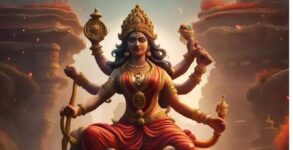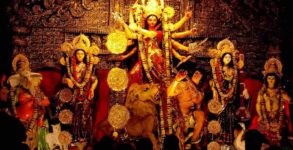Guru Arjan Dev 460th Birth Anniversary: Guru Arjun Dev was born 15 April 1563 in Goindval, India. Mata Bhani and Guru Ramdas were his parents. Guru Amardas, his maternal grandfather, and Guru Ramdas, his father, were the third and fourth Sikh Gurus. After his father died, he became the fifth Sikh Guru in 1581.
Guru Arjun founded the Amritsar Golden Temple (Harmandir Sahib). He designed the four gurdwara entrances, stating, “My faith is for the people of all castes and all creeds from whichever direction they come and to whichever direction they bow.”
He ordered Sikhs to devote 10% of their income to charity. The Guru Granth Sahib, his legacy to the Sikh faith, contains all of the Gurus’ writings. Guru Arjun Dev incorporated Hindu and Muslim saints’ works that aligned with Sikhism and the Gurus.
In 1606, Mughal Emperor Jahangir fined Guru Arjun 200,000 rupees and ordered him to remove inappropriate hymns from the book. According to Sikh history, the Guru was tortured and executed for not removing the lines and paying the fine.
The Sri Guru Granth Sahib is read in full on this festival. The Sri Guru Granth Sahib is sometimes paraded and sweets are distributed outside gurdwaras.
Guru Arjan Dev Ji’s martyrdom:
Guru Arjan Dev Ji was tortured for five days without bleeding. They were imprisoned, placed in a large copper cauldron of boiling water, and sat on a blazing hot plate as Jahangir’s Mughal army poured hot sand over them for five days. The first Sikh martyr was Guru Arjan Dev Ji, the fifth Guru.
Sri Arjan Dev Ji was born in Goindwal to Guru Ram Das Ji and Bibi Bhani Ji, daughter of Guru Amar Das Ji, on Tuesday, Vesakhi Vedi 7, 1620 BK (14 April 1563 AD). Prithi Chand and Mahadev were his older brothers.
Guru Amar Das Ji loved Arjan Dev Ji and spent 11 years together. While Guru Amar Das Ji slept, young Arjan Dev Ji shook the bed. Guru Ji told Bibi Bhani Ji, his daughter, “Dohita bani ka bohita,” or “my grandson will spread the wisdom of Gurbani.”
Guru Amar Das Ji taught Arjan Dev Ji Gurmukhi and Baba Buddha Ji taught him Sikhi. He acquired algebra, Hindi, Persian, Sanskrit, horseback riding, and archery. Arjan Dev Ji loved Gurbani since childhood. He was knowledgeable about Raags and played the Sarangi for Kirtan.
Wife:
Guru Arjan Dev married Mata Ganga on 19 June 1589. Mata ji was the daughter of Bhai Krishan Chand of Mau, 10 km west of Phillaur, Punjab, India. Guru Arjan Dev Ji arrived in Doaba (Bilga) the day before the wedding. He rested here for two days before the wedding at Mau Sahib.
The village, now a town, is famed for preserving Guru Arjan Dev ji’s sacred clothing from this wedding. Guru Ji praised Bilga’s devoted devotees. Gurdwara Bilga Sahib commemorates the Guru’s visit. After bathing, the Guru gave him Saili (cap), chola, pyjama, Batva, Dushala, Simrana Mala, and Chandan ki chawanki.
A three-day fair celebrates Guru Arjan Dev and Mata Ganga ji’s marriage. Before Diwan’s closing ceremony, Guru Sahib’s holy robes are displayed.
Harmandar Sahib completion:
Three of Baba Nanak’s successors established the new religion’s foundation. Guru Arjan Dev Ji stabilised it. He completed his father’s clay nectar tank as ordered by Guru Nanak through Guru Ram Das Ji. Guru Arjan Dev Ji invited Mian Mir, a Muslim Saint from Lahore, to lay the cornerstone of the Harmandar, the modern Golden Temple. The building’s four doorways showed its inclusivity of all religions and castes. Contrary to the congregation’s wishes, the Harmandar Saheb’s floor was kept lower than the surrounding region since water flows downward and so do God’s blessings. Amritsar’s reverence, amenities, and merriment arrived with God’s House.
Adi Granth completion:
Guru Arjan Dev Ji’s greatest accomplishment was the Holy Book. He compiled Guru Granth Sahib with three objectives in mind. Impostors added to and corrupted the first four Gurus’ hymns and teachings. Guru Arjan wants to keep these jewels. Fixing the route of his predecessors and giving the Panth an everlasting guiding light that was both physical and spiritual.
He most wanted to prove the Sikh religion was casteless and secular. He mixed his own hymns with those of Sheikh Farid, Bhagat Kabir, Bhagat Ravi Das, Dhanna Namdev, Ramannand, Jai Dev, Trilochan, Beni, Pipa, and Surdas. All from different times, sects, and castes.
Guru Arjan’s poetry is sublime. Over half of the Guru Granth Sahib is his holy writings. The Granth Sahib combines physical and spiritual consciousness and illuminates contemporary political and social life. He also built Kartarpur, Tarn Taran, and Lahore’s Baoli.
Sir Mokshagundam Visvesvaraya Death Anniversary: Facts about Statesman and Eminent Engineer
Masand bolstered:
Guru Ram Das introduced Masands (representatives of the Gurus at far-flung places) and the Dasvand principle of a Tenth of an individual’s income for the Guru’s Langar (Common Kitchen) and other acts of compassion for the destitute. In Guru Angad’s day, Satta and Balwand, the professional bards who performed hymns at the Guru’s Darbar, believed their talent was the reason for their Guru’s fame. Guru Arjan Dev Ji, who loved music and Ragas, started the tradition of congregants singing to avoid such egoism.
Famine ravaged Punjab during his term. He convinced Mughal Emperor Akbar to reduce land revenue that year. Jeth Sudhi 4 Smt. 1663, May 30, 1606 A.D., is the most important day in Sikh chronology. Akbar believed the Sikh Gurus were pious. He came to Goindwal during one of his campaigns and ate the Langar’s basic cuisine on the floor with men of all castes before meeting Guru Amar Das.
Saint Mian Mir of Lahore, a Muslim Pir, was close to the Guru. Akbar respected the Pir, thus he ignored the claims against Guru Arjan in Akbar’s Court by Prithi Chand and his son Meharban and several jealous Brahmin Priests. The complainants were embarrassed yet continued their schemes after Akbar’s death.
Famous Sikh Gurus:
The fifth Guru, Guru Arjan Dev, illuminated and guided the House of Baba Nanak, which became very prominent. The Guru’s message of peace and harmony throughout the Mughals’ brutality resonated with the people. Hindu and Muslim devotees visited the Guru’s residence in equal numbers. Guru Arjan Dev Ji’s fame enraged Orthodox Muslims.
From 1581 to 1606, Guru Arjan Dev Ji’s time, the Sikh population in broader Punjab rose dramatically as thousands of new Sikhs joined the Guru’s sangats in the newly built Harmandar Sahib. Even great chieftains like Chaudhary Langaha Dhillon of Jhabal, Chaudhary Amrika of Tarn Taran Sahib, Bhai Manjh of Kang Mai village, and many more followed the renowned Guru.
Sikh growth:
Many Punjabi tribes, including Khatri, Jatt, Rajput, Tarkhan, Chamar, Arora, Kamboja, Saini, and others, converted to Sikhism from Hinduism and Islam. Due to the purity of the Guru’s message and his immense popularity, even Muslim pir’s and Hindu saints, yogis, and sidhas became Sikhs and followers of the Guru. For the first time, the new Sikh religion became the most popular religion of mediaeval Punjab.
Guru Sahib created many Punjabi towns, villages, and wells. In Majha, Doaba, Malva, and Nakka, Punjab, Sikhism was becoming the majority religion. Returning peace and prosperity. Mughal leaders in Delhi were upset, but Punjabi masses were thrilled.
Popularity and misinformation breed hatred:
Guru Arjan’s success enraged the orthodox and fundamentalist Muslims in the Mughal court in Delhi, who were hostile towards Guru Nanak Dev Ji’s residence. The adversaries of Nanak stoked the Mughal leader’s doubts, concerns, and mistrust of the Guru.
Chandu Shah, a powerful Hindu banker and revenue official in the Emperor’s Darbar (Court) in Lahore, exploited this. He was urged to marry his daughter to Guru Arjan Dev Ji’s only son, Hargobind, but because of his disrespect for the Guru, he laughed at the idea and said harsh things to the Guru.
The Mughal court elites misled Emperor Jahangir about the Guru’s identity and teachings. Read Emperor Jahangir’s “Tuzuk-i-Jahagiri” (Memoirs of Jahangir) on the Guru to understand his confusion:
“In Govindwal, on the river Biyah (Beas), there was a Hindu named Arjun, in the garments of sainthood and sanctity, so much so that he had captured many of the simple-hearted Hindus, and even of the ignorant and foolish followers of Islam, by his ways and manners, and they had loudly sounded the drum of his holiness. He was called Guru, and foolish people worshipped him. They maintained this shop warm for three or four spiritual successors. Many times I considered ending this futile affair or bringing him into the Islamic assembly.”


















